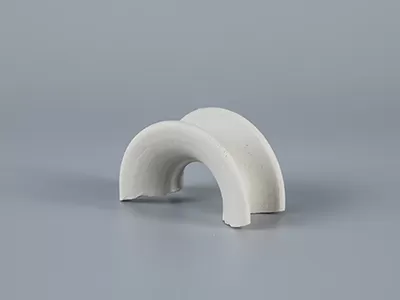Ceramic Intalox Saddle Aluminum Content: Key Factors & Specifications
Introduction

Ceramic Intalox saddle packing, a staple in corrosive and high-temperature separation processes, owes its durability and chemical resistance to its ceramic composition. A critical component in its material makeup is aluminum, primarily in the form of alumina (Al₂O₃), which significantly influences the packing’s mechanical strength, thermal stability, and corrosion resistance. Understanding aluminum content is essential for material selection and performance optimization in industrial applications.
Aluminum Content in Ceramic Intalox Saddles
Ceramic Intalox saddles are typically manufactured from alumina ceramics, with aluminum content varying based on grade and application requirements. The aluminum content is indirectly reflected by the alumina percentage in the ceramic matrix:
- Low-alumina ceramics: Contain 70–85% alumina, with aluminum accounting for approximately 38–46% by weight (since alumina is 52.9% aluminum by composition). These are cost-effective for mild corrosive conditions.
- High-alumina ceramics: Feature 90–99% alumina, translating to 47.6–52.4% aluminum content. They offer superior hardness, wear resistance, and thermal shock resistance, suitable for extreme temperatures (up to 1600°C) and strong acid/alkali environments.
Impurities like silica (SiO₂) or magnesia (MgO) may reduce effective aluminum content but are often added to enhance sintering properties without compromising core performance.
Factors Influencing Aluminum Content
- Application Requirements: Corrosive processes (e.g., sulfuric acid absorption) demand higher alumina (and thus aluminum) to resist chemical attack, while general-purpose applications use lower grades.
- Manufacturing Standards: Industrial standards (e.g., ASTM, ISO) specify alumina ranges to ensure consistency, with aluminum content verified via X-ray fluorescence (XRF) or chemical analysis.
- Mechanical Performance: Higher aluminum content enhances compressive strength (up to 2000 MPa for 99% alumina) and reduces porosity, critical for high-pressure column operations.
Importance in Industrial Use
Aluminum content directly impacts the packing’s suitability for specific workflows:
- Corrosion Resistance: Higher aluminum (via alumina) improves resistance to acidic and alkaline media, extending service life in chemical processing.
- Thermal Stability: Alumina’s high melting point (2072°C) ensures stability in high-temperature distillation or incineration gas treatment.
- Cost vs. Performance: Balancing aluminum content optimizes cost—low-alumina variants are economical for non-critical applications, while high-alumina options justify investment in harsh conditions.

